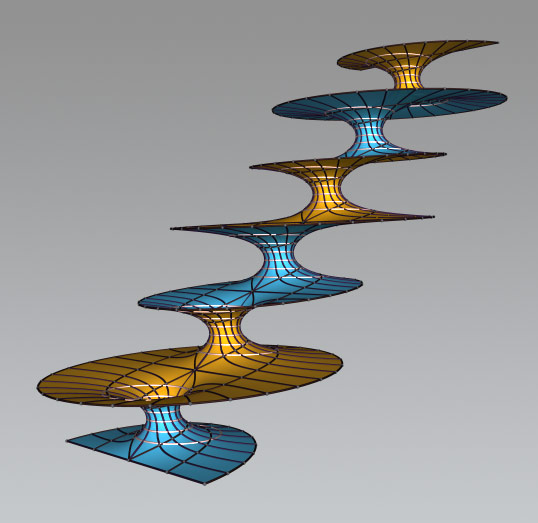In a posthumous paper from 1867, Bernhard Riemann discusses which minimal surfaces have horizontal cross sections that are all lines or circles. Known examples were the catenoid and the helicoid. Using elliptic functions, Riemann solved the problem completely and wrote down a new 1-parameter family of such surfaces.
Since their discovery, these surfaces have kept intriguing mathematicians. Max Shiffman proved in 1956 that any minimal surface that has as a boundary two circles in parallel planes and is homeomorphic to a cylinder must be part of a surface from Riemann's family.
Meeks, Perez, and Ros proved in 2008 that any simply connected, complete, properly embedded minimal surface must be one of Riemann's examples or their limits (which are the catenoid, the helicoid, or the plane).- Matthias Weber

 The College of Arts
The College of Arts